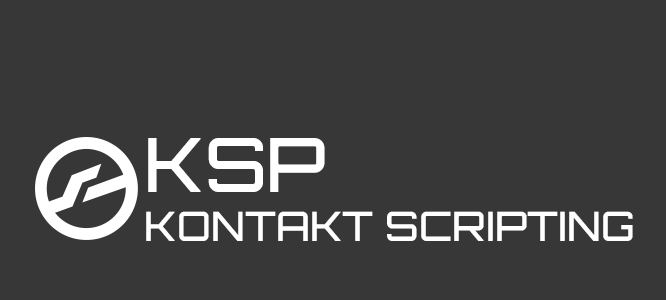CONTENT: 1x Bass, 3x Lead, 1x Pad, 1x FX. Download for free below FILE NAMES: BS – Anubis.nmsv, LD – Osiris.nmsv, LD – Seth.nmsv, LD&FX – Ra.nmsv, PD – Isis.nmsv, FX – Horus.nmsv
Posts By: YummyBeats
KSP Scripting (Kontakt) :: Custom UI: Switchable, Dynamic Background Image / Wallpaper (via label element)

Unfortunately once the initial wallpaper is set, we can’t alter the image file anymore. Even not by setting different initial wallpapers for each script tab. Because the last applied wallpaper will be the one and only initial wallpaper for the whole instrument. But we can either offset the initial wallpaper that means moving it via… Read more »
KSP Scripting (Kontakt) :: Custom UI: positioning controls (Grid vs. Pixel)

to create your custom UI and place custom controls you can chose between a grid system or exact pixels.
KSP Scripting (Kontakt) :: Custom UI: Background Image / Wallpaper

The instruments background image is called “wallpaper”. Its’ the basic background texture where all UI elements (knobs, buttons etc) get layered on top. Just to give you an example: we could take our default graphic software and design a realistic synth surface wallpaper (png file) containing “sockets” for some knobs and buttons with detailed shadows,… Read more »
KSP Scripting (NI Kontakt) :: BASICS :: Mathematical Operators, Statements and Commands / Functions

Lady Gaga – Applause, Synths for Massive (Free Download)
CONTENT: 2x Bass, 2x Lead, 2x Pad. Download for free below FILE NAMES: BS – FattyMoog (applause).nmsv, BS – Thinna (applause).nmsv, LD – ImPulsive (applause).nmsv, LD – Slimma (applause).nmsv, LD & PD – MeGaga I (applause).nmsv, LD & PD – MeGaga II (applause).nmsv
KSP Scripting (NI Kontakt) :: BASICS :: Variables, Arrays, Constants

Like with any other programming languages in KSP there are also variables, arrays and constants. They can only be declared inside the on init callback and can then be used throughout the whole script. So they are all on global scope by default and can even be used inside custom functions.
KSP Scripting (NI Kontakt) :: BASICS :: Callbacks & Basic Structure

The Basic code structure is very simple. We basicaly put most of our code into callbacks All callbacks look like this on <callback> … end on In general the code inside callbacks gets executed when specific events happen. For example playing a note on our keyboard always executes the “on note” callback. So callbacks build… Read more »